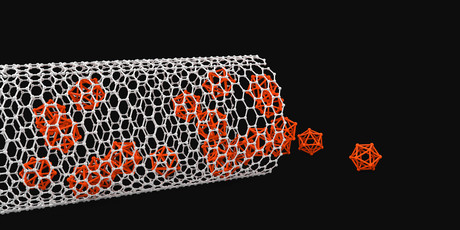Atom-thin nanowires efficiently convert heat to electricity

Waste heat can now be converted to electricity more efficiently using one-dimensional nanoscale materials as thin as an atom, thanks to new research led by the University of Warwick and published in the journal ACS Nano.
Collaborating with the Universities of Cambridge and Birmingham, researchers from Warwick’s Department of Physics found that the most effective thermoelectric materials can be realised by shaping them into the thinnest possible nanowires. Thermoelectric materials harvest waste heat and convert it into electricity — and are much sought after as renewable and environmentally friendly sources of energy.
“In contrast to three-dimensional material, isolated nanowires conduct less heat and more electricity at the same time,” said Dr Andrij Vasylenko, first author on the paper from the University of Warwick. “These unique properties yield unprecedented efficiency of heat-to-electricity conversion in one-dimensional materials.”

The researchers were investigating the crystallisation of tin telluride in extremely narrow carbon nanotubes used as templates for the formation of these materials in their lowest dimensional form. In a combined theoretical-experimental research, they were able not only to establish a direct dependence between the size of a template and a resulting structure of a nanowire, but also to demonstrate how this technique can be used for regulation of the thermoelectric efficiency of tin telluride formed into nanowires 1–2 atoms in diameter.
“This opens up an opportunity for creation of a new generation of thermoelectric generators, but also for exploration of alternative candidate materials for thermoelectrics among abundant and non-toxic chemical elements,” said Dr Vasylenko. And with a growing demand for both miniaturisation and enhanced efficiency of thermoelectrics, nanostructuring offers a viable route for targeting both objectives.
Organic transistor 'limitation' improves stability
Researchers have shown that a longstanding organic transistor design limitation actually improves...
OLED circular polarisation is now electrically switchable
Researchers have discovered a way to control left- or right-handed polarised light via charge...
Nanoscale pixels to advance augmented reality eyewear
Physicists have developed extremely small pixels that can be used in compact AR glasses, using...





